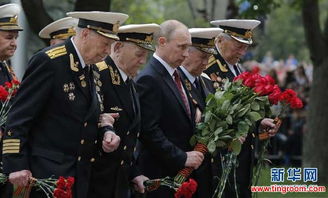Soviet Union Before World War II: A Detailed Overview
The Soviet Union, officially known as the Union of Soviet Socialist Republics (USSR), was a vast and influential country that emerged in the early 20th century. Before the outbreak of World War II, the Soviet Union was a complex and dynamic entity, characterized by its rapid industrialization, political turmoil, and cultural transformation. This article will delve into various aspects of the Soviet Union during this period, providing a comprehensive understanding of its social, economic, and political landscape.
Geography and Population

The Soviet Union was the largest country in the world, spanning over 22 million square kilometers. It was located in Eastern Europe and Northern Asia, with borders that stretched from the Arctic Ocean in the north to the Black Sea and the Caspian Sea in the south. The country was home to a diverse population of over 180 million people, including ethnic groups such as Russians, Ukrainians, Belarusians, Kazakhs, and Tatars.
Economic Transformation

One of the most significant developments in the Soviet Union before World War II was its rapid industrialization. Under the leadership of Joseph Stalin, the Soviet government implemented a series of five-year plans aimed at transforming the country from an agrarian society into an industrial powerhouse. By the mid-1930s, the Soviet Union had become the world’s second-largest industrial producer, trailing only the United States.
| Five-Year Plans | Objectives | Outcomes |
|---|---|---|
| 1928-1932 | Develop heavy industry, such as steel, coal, and machinery | Increased industrial output by 250% |
| 1932-1937 | Expand consumer goods production and improve living standards | Increased consumer goods production by 150% |
| 1937-1941 | Further develop heavy industry and prepare for war | Increased industrial output by 200% |
However, this rapid industrialization came at a high cost. The five-year plans were characterized by forced labor, mass deportations, and widespread human rights abuses. The collectivization of agriculture, which was part of the industrialization process, led to a significant decline in agricultural production and resulted in millions of deaths from starvation.
Political Landscape

The Soviet Union before World War II was a totalitarian state under the leadership of Joseph Stalin. Stalin’s regime was characterized by strict control over the economy, politics, and culture. The government employed a policy of terror, including political purges, executions, and forced labor camps, to maintain its power. The Great Terror of the late 1930s resulted in the deaths of millions of Soviet citizens, including intellectuals, political opponents, and ethnic minorities.
Cultural Transformation
Despite the political repression, the Soviet Union experienced a period of cultural transformation before World War II. The government promoted a policy of “Socialist Realism” in the arts and literature, which aimed to celebrate the achievements of the Soviet state and its people. This period saw the rise of prominent artists, writers, and filmmakers, such as Sergei Eisenstein, Mikhail Kalatozov, and Maxim Gorky.
However, the cultural landscape was also marked by censorship and political control. The government closely monitored and regulated the arts, ensuring that they adhered to the official ideology. This led to a homogenization of cultural expression and limited the diversity of artistic and literary works.
Conclusion
Before World War II, the Soviet Union was a country in the midst of profound transformation. Its rapid industrialization, political repression, and cultural transformation shaped its identity and set the stage for its role in the global conflict that followed. Understanding this period is crucial for comprehending the complexities of the Soviet Union and its impact on the world.
